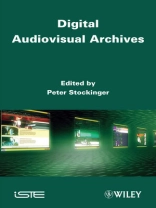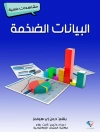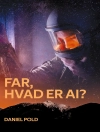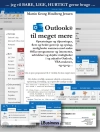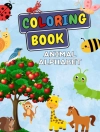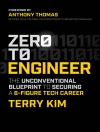Today, huge quantities of digital audiovisual resources are already
available – everywhere and at any time – through Web
portals, online archives and libraries, and video blogs. One
central question with respect to this huge amount of audiovisual
data is how they can be used in specific (social, pedagogical,
etc.) contexts and what are their potential interest for target
groups (communities, professionals, students, researchers,
etc.).
This book examines the question of the (creative) exploitation of
digital audiovisual archives from a theoretical, methodological,
technical and practical point of view, especially in three main
directions of work:
– The repurposing and republishing of existing audiovisual
data.
– The building of community-centric audiovisual archives.
– The use of digital social media and Web 2 technology for the
diffusion and sharing of audiovisual content.
This book presents a series of concrete examples of creative
uses of digital audiovisual corpora for education, research and
cultural heritage preservation and valorization.
Table des matières
Introduction xi
PART 1: ANALYSIS, REWRITINGS AND REPUBLICATIONS 1
Chapter 1. Analyzing an Audiovisual Corpus of A Thousand and One Nights 3
Muriel CHEMOUNY
1.1. Introduction 3
1.2. Creating a thematic educational dossier based on A Thousandand One Nights 6
1.3. Perspectives: ASWs and new forms of digital writing 18
Chapter 2. Analyzing a Corpus of Traditional Bread Making21
Elisabeth DE PABLO
2.1. Introduction 21
2.2. Creating educational dossiers to raise public awareness23
2.3. Creating a communication dossier for improving culturalevents 36
Chapter 3. Republishing Audiovisual Resources 41
Peter STOCKINGER and Elisabeth DE PABLO
3.1. Introduction 41
3.2. Breakdown of the (re)publication process according to genre44
3.3. ‘Rerecording’ audiovisual texts 47
3.4. Interactive video books 50
3.5. Thematic folders 53
3.6. Educational folders 56
3.7. Narrative path 59
PART 2: AUDIOVISUAL ARCHIVES, KNOWLEDGE MANAGEMENT ANDCULTURAL HERITAGE 61
Chapter 4. An Archive on the Intangible Cultural Heritage of Andean Populations in Peru and Bolivia 63
Valérie LEGRAND-GALARZA
4.1. Introduction 63
4.2. Scientific methodology and ethical and participativeapproaches 65
4.3. The Andean intangible cultural heritage portal 75
4.4. Interests and perspectives of the project 89
4.5. Conclusion 102
Chapter 5. An Audiovisual Azerbaijani Cultural Heritage Portal for Educational and Academic Use 105
Aygun EYYUBOVA
5.1. Introduction 105
5.2. Disseminating and transmitting cultural heritages via the Internet 107
5.3. Aims of creating an Azerbaijani cultural heritage portal(AACHP) in the ASA-SHS project 110
5.4. Principal aspects of cultural heritage approach indeveloping an Azerbaijani cultural heritage portal (AACH)111
5.5. Analyzing audiovisual corpora for AACH in ASA 118
5.6. Applications for the AACH portal and the ASW environment135
5.7. Conclusion: advantages, benefits and perspectives 137
PART 3: SOCIAL NETWORKS, WEB 2.0 AND MOBILE COMMUNICATION139
Chapter 6. Academic Communication via Facebook and Twitter141
Jirasri DESLIS
6.1. Introduction 141
6.2. The Ark Work portal 142
6.3. Facebook for sharing various types of information 145
6.4. Twitter as a means of publicizing short information 157
Chapter 7. Uses for Digital Content Sharing Platforms169
Jirasri DESLIS
7.1. Introduction 169
7.2. Flickr 170
7.3. Twitpic 172
7.4. Ark Work on You Tube 173
7.5. Ark Work on Dailymotion 181
7.6. Ark Work on Vimeo 183
7.7. Nomadic approaches: mobile communication for sharingacademic content 184
Chapter 8. Uses for Content Aggregators and Community Networks 189
Jirasri DESLIS
8.1. Netvibes, a content aggregator 189
8.2. Pearltrees, a content curation platform 196
8.3. Sharing information on community portals: the Louvre Community portal (communauté.louvre.fr) 199
8.4. Conclusion 207
Chapter 9. Tracing Video Usage: The Potential of VDI209
Francis LEMAITRE and Valérie LEGRAND-GALARZA
9.1. Introduction 209
9.2. Presentation of the scenario 211
9.3. Walkthrough 227
9.4. Conclusion 244
Glossary of Specialized Terms 247
Peter STOCKINGER
Glossary of the Acronyms and Names 271
Peter STOCKINGER
Bibliography 291
List of Authors 297
Index 299
A propos de l’auteur
Peter Stockinger is Full Professor at the National Institute of Oriental Languages and Civilisations (INALCO) in Paris and also Research Director of ESCo M (Cognitive Semiotics and New Media Research Lab) of the Fondation Maison des Sciences de l’Homme (FMSH) in Paris, France.
